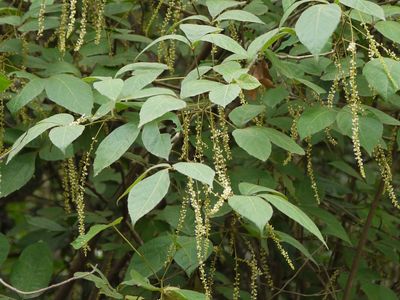What is a Tit-Berry?
Tit-berry shrubs (Allophylus cobbe) are generally shrubby in habit but may also be a climber or on occasion even a tree that can reach 33 feet (10 m.) in height but more commonly is no more than 9 to 16 feet (3-5 m.) tall. The foliage is a glossy dark green distinguished by its make up of three serrated leaflets that may be densely haired to smooth. The flowers are tiny and inconspicuous and morph into small, bright red, fleshy berries that are clustered on a stem.
Tit-Berry Information
Tit-berry is found on coastal rocks and sandy beaches, freshwater to brackish swamps, open areas, shrubberies, and amongst secondary and primary forests, limestone outcrops, and granite boulders. Their habitat ranges from sea level to elevations of up to 5,000 feet (1,500 m.). The dull orange-red berries are edible and both humans and birds ingest them. The berries are also commonly used as fish poison. The wood, although hard, is not very durable. It is nonetheless used for roofing, firewood, bows, and rafts. The bark, roots, and leaves are used in decoctions to treat fever and stomach aches. The bark is applied to burns.
How to Grow Tit-Berry
Tit-berry can be grown in the home landscape for both its ornamental foliage and fruit as well as for bird habitat and food. It can be used in parks and garden landscapes, along coastal or beachfront properties, and for use as hedges. Tit-berry tolerates dry to waterlogged soil to saline soil and salt spray. It will thrive in moist, well-draining soils. Plants can be propagated by seed or air-layering. Tit-berry care is simple since the plant is tolerant of a variety of conditions including drought. That said, it will benefit from moderate watering and a full sun location.
